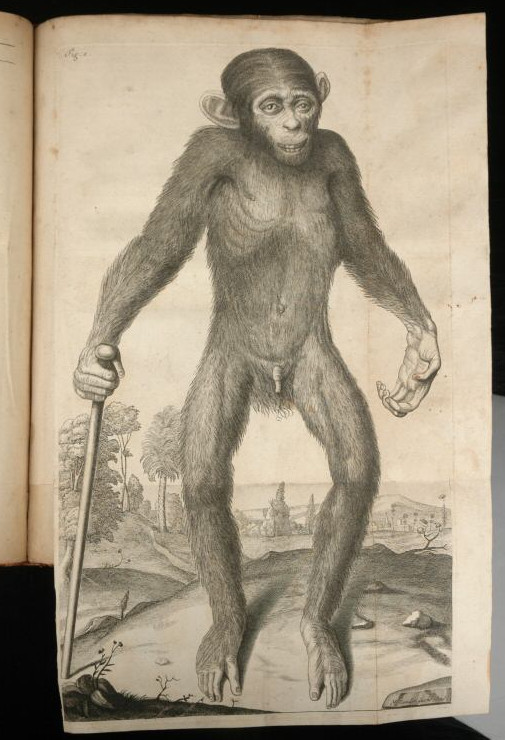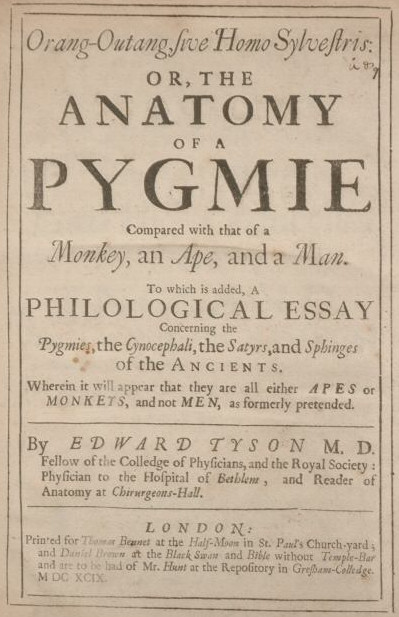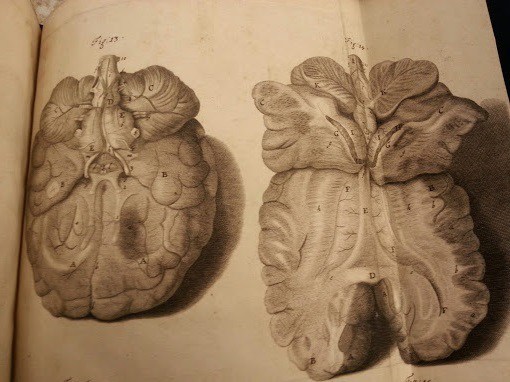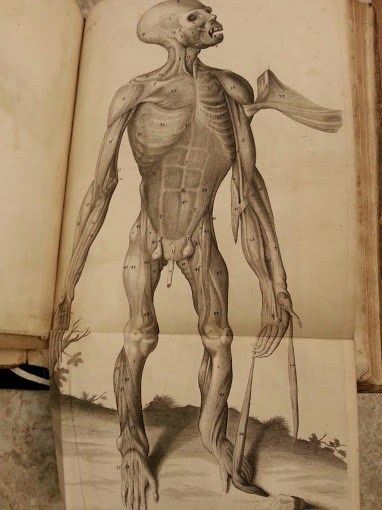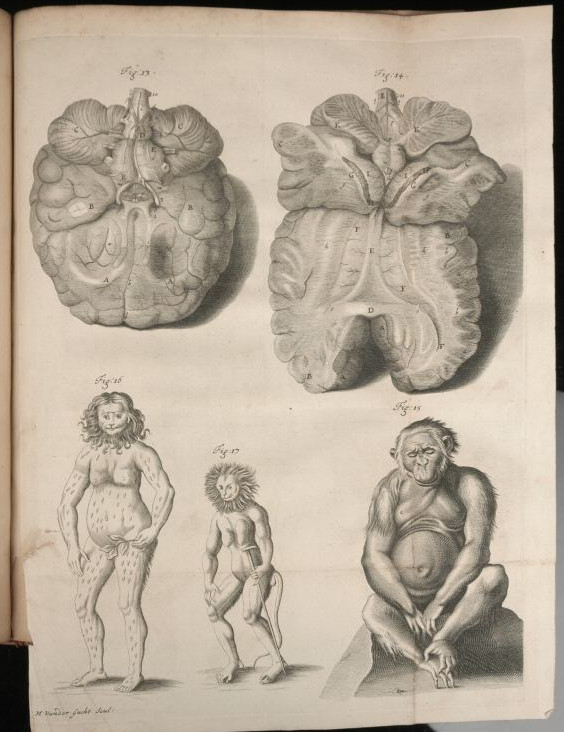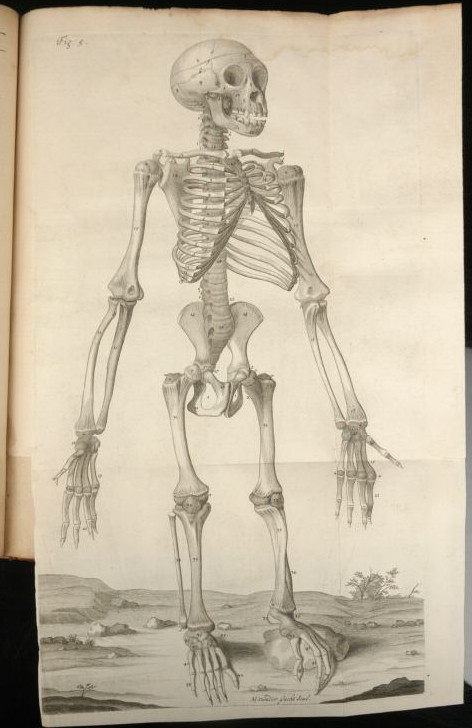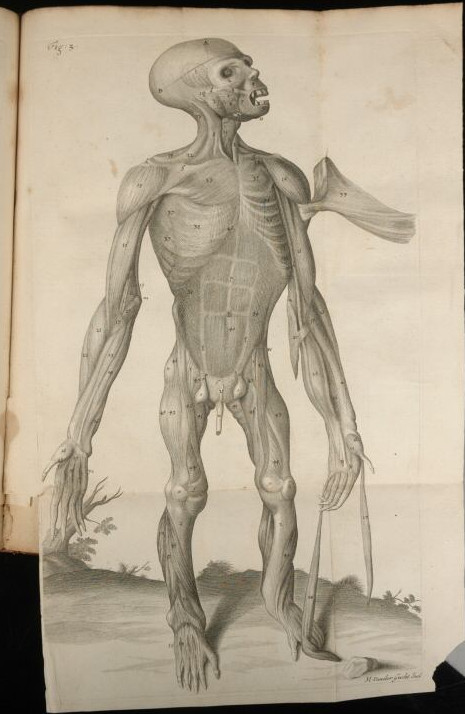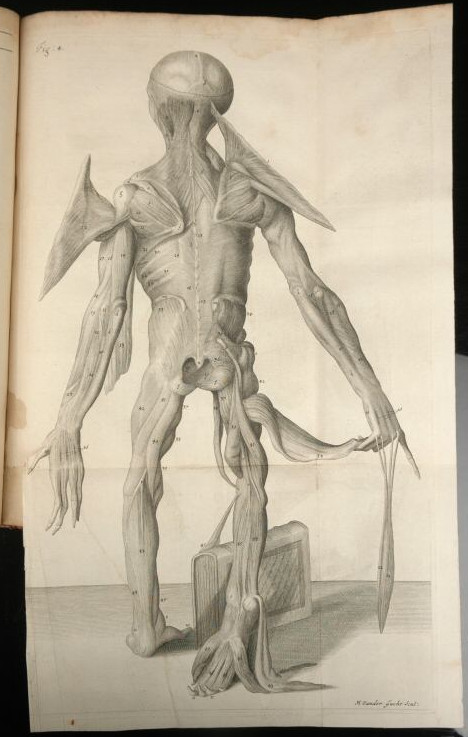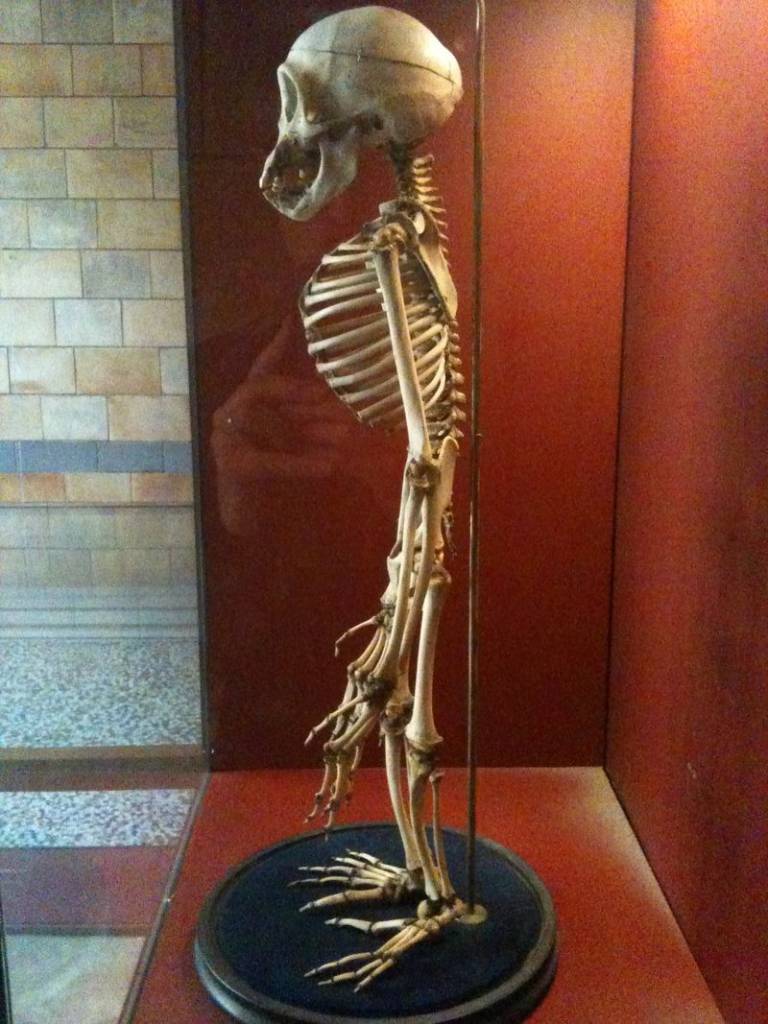In 1699 Edward Tyson (1651 – 1708), a fellow of the Royal College of Physicians and a doctor at the Bedlam institute for the mentally ill, published Orang-Outang, sive Homo Sylvestris: or, the Anatomy of a Pygmie compared with that of a Monkey, an Ape, and a Man, in which he relayed his account of the dissection of a juvenile creature, later named a chimpanzee, brought to the UK from Angola in 1998.
When the exotic creature died, having fallen on ship and developed an abscess which became infected in its broken jaw, Tyson acquired the remains. By comparing muscular and skeletal measurements of Pygmie (chimp) and man, Tyson aimed to prove that “the pygmies, the cynocephali, the satyrs and spinges of the ancients” were not human.
Tyson was no ghoul. To him all creatures were part of a “world of wonders”. When he worked at Bedlam, the hideous practice of allowing paying customers to gawp at the ill was ended.
Tyson wrote:
By viewing the same parts…together we may the better observe Nature’s Graduation in the formation of Animal bodies, and the Transitions made from one from to another; than which, nothing can more can conduce to the attainment of true Knowledge, both of the Fabrick and Uses of the Parts.
This work in finding the chimp’s place in what Tyson called the “chain of creation” – an early take on classifying animals – would take on deep racial overtones. In 1764, Dutch anatomist Peter Camper looked at Tyson’s work, and eminent surgeon William Cowper’s illustrations (1665 – 1710; see below), and deduced that “Ape-kind is extremely given to Venery… they covert not only their own Species, but to an Excess are inclined and solicitous to a different, and are most amorous of Fair Women.” Monkeys, said the experts in these things, preferred white women.
Camper went further, suggesting that sex between whites and Apes had produced the black race. “There are Philosophers to be found,” he opined, “who want to show with some rhetorical flourish that Negroes and Blacks descended from the mingling in olden times of Great Apes or Orang-utans, which were called satyrs by the ancients.”
This hierarchy of being, reasoned the white scientists, was manifest in the low mental capacity of Apes. Apes lacked the ability to reason, they abstracted. By deduction, bestial blacks were less capable then whites. There were merely imitative.
The links between human and Ape was further supported by Cowper’s drawings. In one, the chimpanzee holds a walking stick. Tyson was attributing human characteristics to this non-human creature. Boundaries were being blurred. Although Tyson stated that the Ape was no man:
“I take him to be wholly a Brute, tho’ in the formation of the Body, and in the Sensitive or Brutal Soul, it may be, more resembling a Man, than any other Animal; so that in this Chain of the Creation, as an intermediate Link between an Ape and a Man, I would place our Pygmie.”
Tyson’s Pygmie chimp’s skeleton resides at the London Museum of Natural History.
Via: Race and Aesthetics in the Anthropology of Petrus Camper (1722-1789);
Would you like to support Flashbak?
Please consider making a donation to our site. We don't want to rely on ads to bring you the best of visual culture. You can also support us by signing up to our Mailing List. And you can also follow us on Facebook, Instagram and Twitter. For great art and culture delivered to your door, visit our shop.
